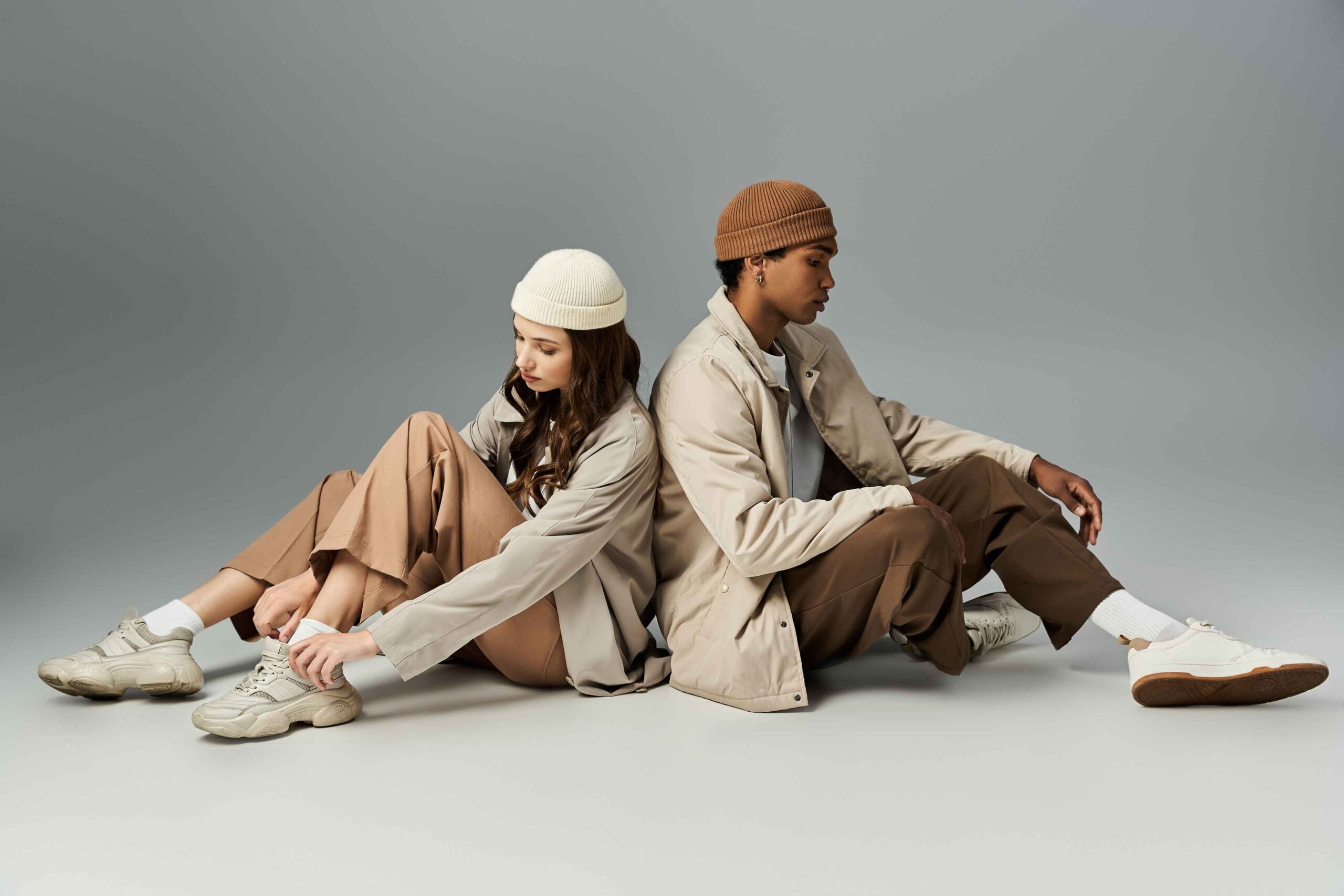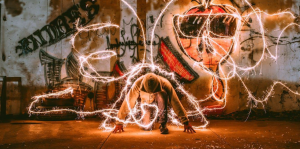The Evolution of Street Style: From Subculture to High Fashion

Street style has undergone a remarkable transformation over the years, evolving from a rebellious subculture to an integral part of the high fashion world. Once a form of self-expression among youth subcultures, street style now permeates the runways of the most prestigious fashion houses and influences the global fashion landscape. This evolution is a testament to how culture, creativity, and individualism have become celebrated and integrated into mainstream fashion. In this article, we will explore how street style transitioned from the streets to the fashion elite and what this change signifies for the future of style.
The Origins of Street Style
Street style can trace its roots to the 20th century, particularly in urban areas where youth subcultures began to take shape. In the early days, fashion was largely dictated by the establishment: high fashion was reserved for the wealthy and elite, and clothing trends were set by designers and department stores. However, as cities grew and became more diverse, so did the ideas about fashion and personal expression.
In the 1950s and 1960s, subcultures like the beatniks, mods, and rockers in the UK and the United States began creating their own distinct looks. These groups rejected the norms of mainstream fashion and, instead, embraced styles that represented rebellion, individuality, and a rejection of social conventions. The mod look, for example, was all about sharp suits and clean lines, while rockers favored leather jackets and motorcycles as symbols of their anti-establishment attitude. These subcultures were not just about fashion; they were movements that challenged the status quo.
The 1970s brought a cultural shift, with the rise of hip-hop culture in New York City. Breakdancers, graffiti artists, and hip-hop pioneers were some of the first to introduce streetwear—oversized jackets, baggy pants, and sneakers—into mainstream consciousness. The hip-hop community embraced a style that was born out of function, with a focus on comfort, ease, and practicality. It was not about adhering to fashion norms but about showcasing authenticity and pride in one’s identity.
Street Style in the 1980s and 1990s
The 1980s marked a critical turning point for street style as it became more closely linked to music and pop culture. With the rise of influential musicians like Madonna, Prince, and Michael Jackson, as well as the emergence of punk rock, grunge, and early hip-hop fashion, street style began to gain recognition outside of the youth subcultures where it originated. Fashion icons like Run-D.M.C. and LL Cool J were often seen wearing Adidas sneakers and leather jackets, making the styles of the street increasingly popular.
In the 1990s, the explosion of grunge fashion, led by bands like Nirvana and Pearl Jam, further solidified the idea that street style was no longer just a rebellious movement but a statement of cultural and social awareness. The hallmark of grunge fashion—flannel shirts, ripped jeans, and oversized jackets—was all about rejecting the polished, high-fashion aesthetics in favor of a more relaxed, effortless vibe. At the same time, hip-hop culture continued to influence the street style scene, with brands like FUBU and Rocawear gaining immense popularity.
In both these decades, street style was still a form of self-expression within subcultures. However, it wasn’t until the turn of the 21st century that it would begin to make its way into the high fashion world.
The 2000s: The First Glimpse of Street Style in High Fashion
By the early 2000s, street style had begun to make waves in mainstream fashion. The internet, and particularly the rise of blogs and early social media platforms, gave everyday fashion enthusiasts a platform to showcase their personal style to a global audience. Fashion bloggers like Scott Schuman (The Sartorialist) and Susie Lau (Style Bubble) played pivotal roles in documenting street style from cities like New York, London, and Milan, giving fashionistas access to what regular people were wearing on the streets.
At the same time, high fashion designers began to take note of the rising influence of street culture. Brands like Louis Vuitton, Dior, and Chanel began incorporating elements of streetwear into their collections. In 2009, Marc Jacobs made waves by collaborating with streetwear brand Supreme, a partnership that cemented the merging of high fashion and street style. Street style had officially crossed over into the luxury fashion world, and its impact on the industry would continue to grow exponentially in the coming years.
The Rise of Streetwear as a Fashion Powerhouse
In the 2010s, streetwear fully embraced its role as a dominant force in the fashion world. The rise of brands like Supreme, Off-White, and Yeezy, alongside the success of high-end collaborations with streetwear brands (such as Louis Vuitton’s collaboration with Supreme and Adidas’ work with Kanye West), showed just how influential street style had become. Streetwear was no longer just about comfort or rebellion; it became a symbol of exclusivity, culture, and identity.
The influence of street style was also seen on the runways, as designers like Virgil Abloh (founder of Off-White and artistic director at Louis Vuitton) brought streetwear aesthetics into luxury fashion. Street style-inspired pieces—hoodies, graphic tees, sneakers, and cargo pants—became staples in high fashion collections. Celebrities like Kanye West, Rihanna, and A$AP Rocky were not just wearing streetwear; they were driving trends, making street style synonymous with celebrity culture.
The phenomenon of “hype” also took hold, where limited-edition items and collaborations between streetwear brands and luxury houses created an air of exclusivity and desire. The demand for these items skyrocketed, further elevating the role of streetwear in the fashion industry. Brands like Supreme, which initially began as a small skate shop in New York, became a symbol of both status and authenticity, and the resale market for these items exploded.
The Influence of Social Media and Digital Culture
Perhaps the most significant factor in the rise of street style to high fashion has been the explosion of social media platforms like Instagram, TikTok, and Pinterest. These platforms have democratized fashion, allowing individuals from all over the world to showcase their personal style and influencing global trends. Influencers, bloggers, and celebrities now use social media as a direct line to their audiences, and street style has become a major part of their content.
Instagram, in particular, has played a key role in the global spread of street style. Fashion influencers and everyday individuals alike use Instagram to document their outfits, often blending high-end pieces with streetwear elements. Brands are now collaborating with influencers to promote their collections, and street style is frequently seen on social media platforms, making it more accessible than ever before.
TikTok has also emerged as a powerful force in shaping fashion trends. Short, viral videos showcasing street style looks, challenges, and DIY fashion tutorials have created a new way for people to interact with street fashion. The culture of instant gratification and viral content has turned street style into a global movement, with trends moving from the streets to the runway in record time.
The Future of Street Style in High Fashion
As we look to the future, it’s clear that street style is here to stay. What began as a form of self-expression within youth subcultures has now become an essential part of the high fashion world. The lines between streetwear and luxury fashion continue to blur, and the influence of street style will only grow as more designers, brands, and influencers embrace it.
The future of street style will likely continue to be shaped by global culture, technology, and the evolving role of social media. We can expect more collaborations between streetwear brands and luxury fashion houses, more diversity in street style, and a continued fusion of high fashion with everyday, casual looks. Street style is no longer just a trend—it has become a lasting cultural force in the fashion world.
Conclusion
Street style’s journey from subculture to high fashion is a fascinating story of rebellion, self-expression, and cultural influence. What was once an underground movement has evolved into a mainstream phenomenon, influencing not only fashion designers but also shaping the way people view and consume fashion globally. From its humble beginnings in urban subcultures to its current status as a cornerstone of luxury fashion, street style’s rise has changed the fashion industry forever.
In the years to come, street style will likely continue to redefine fashion, blurring the lines between luxury and streetwear, casual and couture. It’s a celebration of individuality, creativity, and cultural diversity that is now an integral part of global fashion culture. As street style continues to evolve, it will remain a powerful expression of personal style and a reflection of the times.



